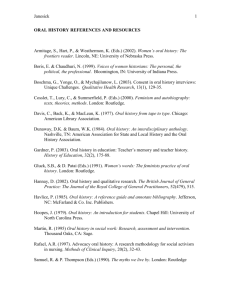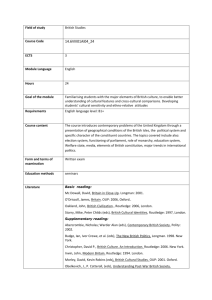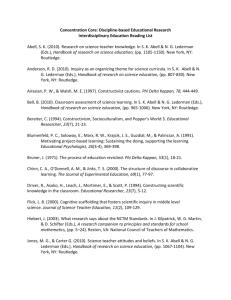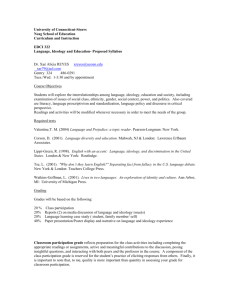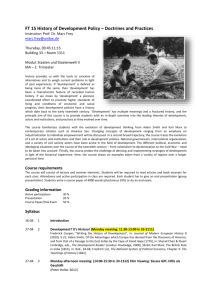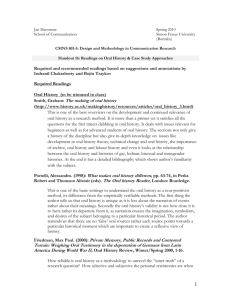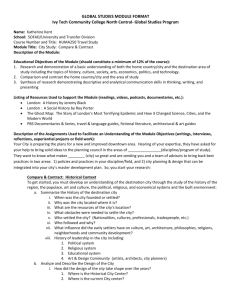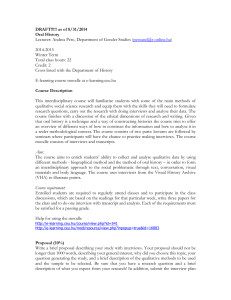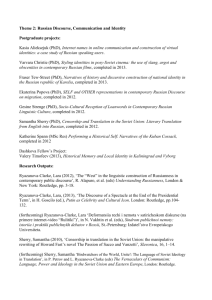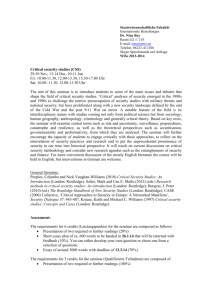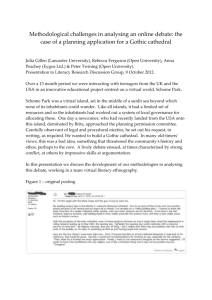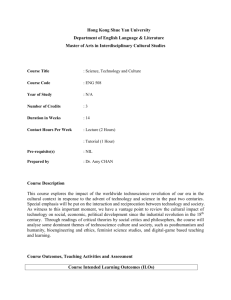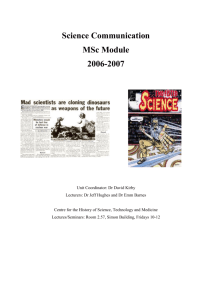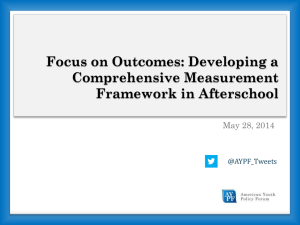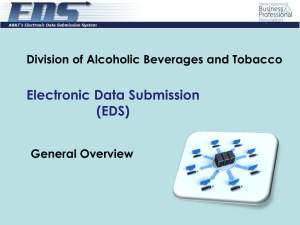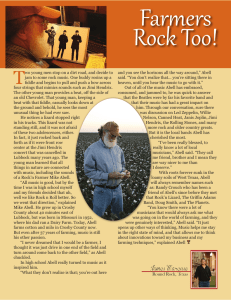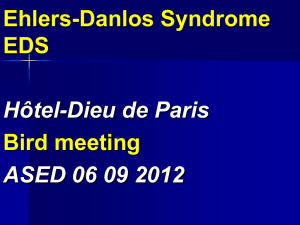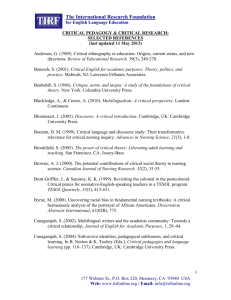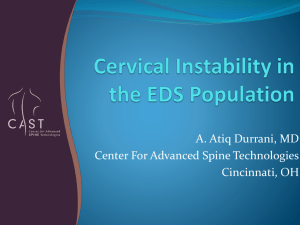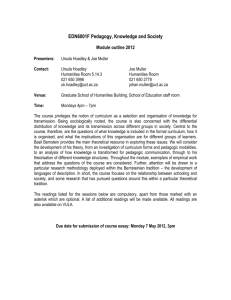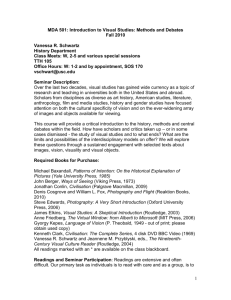Science Education for Diversity - 4
advertisement
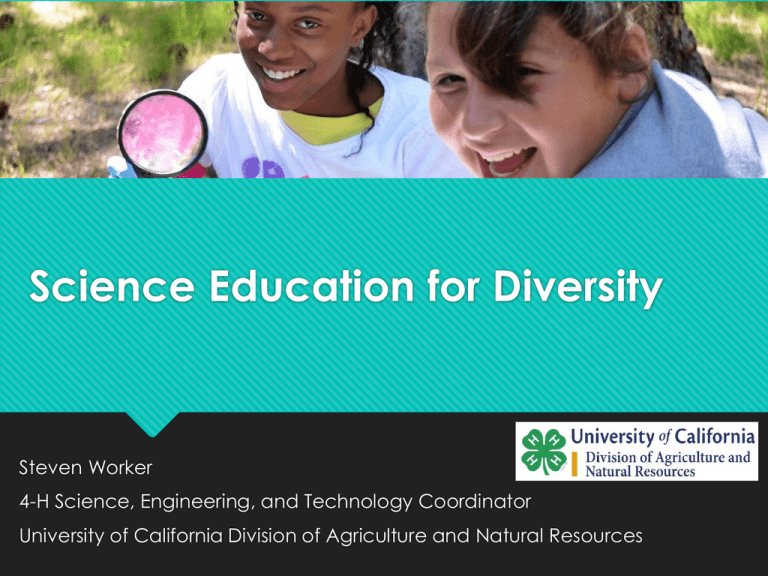
Science Education for Diversity Steven Worker 4-H Science, Engineering, and Technology Coordinator University of California Division of Agriculture and Natural Resources Agenda Prologue: Why should we care? Part 1: What counts as science? Shifting the paradigm from canonical science to community-based science. Part 2: How can we engage diverse learners in science education? Promising practices in pedagogy, professional development, and evaluation. Why should we care? Making the case to improve science education, particularly for students of color. Schooling & standardized tests Students of color fare poorly on standardized science tests. There is unequal access and social exclusion to out-ofschool science opportunities (like science centers) for lowincome, minority students. Dawson, E. (2014). “Not designed for us”: How science museums and science centers socially exclude low-income, minority ethnic groups. Science Education, 98(6), 981-1008. History of non-mainstream students being underserved by the education system. Lee, O., & Luykx, A. (2007). Science education and student diversity: Race/ethnicity, language, culture, and socioeconomic status. In S.K. Abell & N.G. Lederman (Eds.), Handbook of Research on Science Education (Ch. 7, pp. 171-197). New York: Routledge. Chart from the National Center for Education Statistics (2012). The Nation’s Report Card: Science 2011(NCES 2012–465). Institute of Education Sciences, U.S. Department of Education, Washington, D.C. Diversity lacking in science fields The U.S. science workforce does not represent the U.S. population on gender or racial categories. But there is recognition that diversity enhances creativity and innovation. To address this, Scientific American call for attending to difference, nurturing a sense of belonging, and identifying a point-person for diversity goals. Christiansen, J. & Hobbs, A. (2014, October). Where are the data? Scientific American, 311(4), 40-41. Misconceptions: The “real” reason there aren’t more female scientists When popular media misrepresents the mediating role of culture in human development. Christina Sommers- Few women in science: Not because of discrimination or exclusion Not because of difference in ability Because of natural differences in interest American Enterprise Institute. (2014). The real reason there aren’t more female scientists. Published on YouTube, https://www.youtube.com/watch?v=l-6usiN4uoA Part 1: Guiding question What counts as science? First, defining diversity Diversity defined (at least this in this presentation) as youth identifying (or being identified by others) with one or more characteristics that have historically faced discrimination and/or have been marginalized, such as: Race Gender Socioeconomic status (SES) Religion Sexual orientation Physical/mental disabilities Look at your University’s non-discrimination statement; what is included? I am operating from the perspective that we should strive for equity, fairness, and justice in the way people are treated; which is fundamentally about democracy and agency. What is science? Defining science: A pre-brainstormed list of possibilities A body of knowledge Processes (e.g., scientific method) Practices of professional scientists- like those outlined in the Next Generation Science Standards Science describes, explains, and predicts Science involves observation, experimentation, modeling Science methods may use quantitative data, qualitative data, or both (mixed) A discipline by which we search for knowledge and understanding about the natural world What is science? At its core, science is a process and practices to help people make sense of and construct knowledge about the world. Russ, R.S. (2014). Epistemology of science vs. epistemology for science. Science Education, 98(3), 388-396. What is science education*? *for K-12 Goals of science education, a historical summary from Dr. DeBoer Teaching and learning about science as a cultural force in the modern world Preparation for the world of work Learning that science has direct application to everyday living Teaching students to be informed citizens Learning about science as a particular way of examining the natural world Understanding reports of science that appear in the popular media Learning about science for its aesthetic appeal Preparing citizens who are sympathetic to science Understanding the nature and importance of technology and the relationship between technology and science DeBoer, G. (2000). Scientific literacy: Another look at its historical and contemporary meanings and its relationship to science education reform. Journal of Research in Science Teaching, 37(6), 582- 601. Two roads diverged in a yellow wood… Thinking about science education: How might those identifying with one or more of the characteristics of diversity experience and understand science in the following two scenarios? An experience with science From my own 7th grade biology class (back in 1993). The first week was spent memorizing the biological taxonomy: K-P-C-O-F-G-S. As homework, were asked to create our own pneumonic and write it down. The next day, the teacher tested each of us. If a student didn’t remember (like me), he crumpled up their homework sheet and threw it in the wastebasket. It was a humiliating experience. The reasoning was not put into context; the teacher did not provide a reason why we needed to learn this or how it applied to our lives. It was in the 1990 California State Science Standards – “Scale and Structure, Evolution”. CA State Dept. of Ed. (1990). Science framework for California public schools, K-12th. Sacramento. A second experience An interview with a teenager from a Cooperative Extension program called “On the Wild Side”, an overnight camp for 4th-6th graders where environmental education experiences are facilitated by teenagers. “The other cool thing about it was we got to talk about the different evolutionary aspects of seeds, so why would one seed twirl on the wind, why would another seed be in a plant that would get eaten? What are the different aspects of a plant that would make them advantageous to carrying on, reproducing, making more seeds. Every time they brought back a seed we had them categorized and we drew a picture and then we tallied how many each group brought back. It was interesting because even though we were in the same area, the different groups brought back very different seeds and I thought that was interesting because you would have expected the same ratio.” Discuss “The field of science education has long been enamored with understanding, and enacting, the characteristics and practices of professional science.” Russ, R.S. (2014). Epistemology of science vs. epistemology for science. Science Education, 98(3), 388-396. “The relationship between young people and science education is complexly mediated by culture.” Mansour, N., & Wegerif, R. (Eds.) (2013). Science education for Diversity: Theory and practice (Cultural Studies of Science Education, 8). New York: Springer. Perceptions of science This difference was made clear in California’s 4-H CYFAR project, when youth at one site were asked to “Draw a Scientist” and later asked to “Draw Yourself Doing Science.” There was a statistically significant difference in the stereotypical images of science between the two sets of drawings. Draw a Scientist Draw Yourself Doing Science Two visions for science education Boiling down the goals and rationales for science education, Roberts developed two heuristic types: Vision 1 – canonical science: starts with professional scientists and identification of core products, processes, and practices; these are evident in science standards (e.g., NGSS). Vision 2 – community science: starts with the situation, a citizen’s point of view, and pulls relevant science to the situation at hand, but incorporates economic, aesthetic, political, ethical, and social perspectives. Roberts, D. A. (2007). Scientific literacy/Science literacy. In S.K. Abell & N.G. Lederman (Eds.), Handbook of Research on Science Education (Ch. 25, pp. 729-780). New York: Routledge. More Like Vision I (Canonical Science) More Like Vision II (Community Science) Science to prepare future scientists Science as/for participation in the community Theoretical, scientific reasoning to establish theories Case dependent: theoretical, design, practical, value-laden reasoning “The most important way to approach and understand individual and social problems is the way a scientist would, using a theoretical reasoning pattern” “Different reasoning patterns are appropriate .... They come into play according to the requirements of the situation, whether understanding scientific activity, technological problem solving, or personal and societal decision making” Pedagogy: engage youth in the practices of professional scientists Pedagogy: project-based, connects to community and world of the youth Assessment: standardized testing based on a priori outcomes Assessment: seek to understand student’s views and practices Quotes from Roberts, D. A. (2011). Competing visions of scientific literacy. In C. Linder, L. Ostman, D. Roberts, P. Wickman, G. Erickson, & A. MacKinnon (Eds.), Exploring the Landscape of Scientific Literacy (Ch. 2. pp. 11-27). New York: Routledge. What counts as science? Given our definition of science – “sense making and knowledge construction”; and Valuing diversity, multiple perspectives, and all of the tools people use to support sense making Which Vision may better engage and support diverse learners in science education? Part 2: Guiding question How can we engage diverse learners^ in science education*? ^ 5-18 year olds * During out-of-school time Science learning in out-of-school time, Learning happens: Everyday In schools At work In designed settings In youth programs On the Internet LIFE Center (2005). "The LIFE Center's Lifelong and Lifewide Diagram". This diagram was originally conceived by Reed Stevens and John Bransford to represent the range of learning environments being studied at the Learning in Informal and Formal Environments (LIFE) Center (http://life-slc.org). Graphic design, documentation, and calculations were conducted by Reed Stevens, with key assistance from Anne Stevens (graphic design) and Nathan Parham (calculations). starts with basic youth development practices The “Big Three” fundamental characteristics of effective youth programs: Positive and sustained adult-youth relations. (adults who are competent, caring, and continually available) Life-skill building activities. (i.e., enhancing skills pertinent to self-regulation) Opportunities for youth participation in and leadership of valued family, school, and community activities. Lerner, R.M. (2004). Liberty: Thriving and civic engagement among American youth. Thousand Oaks, CA: Sage Publications. and supports science education Science education for diversity: Importance of role models, trust, and personal connections. Capitalizing on learners’ intellectual capital and lived experiences and not an expert-novice paradigm. Recognizing and building on the multiple and varied learning ecologies of young people. Lee, O., & Luykx, A. (2007). Science education and student diversity: Race/ethnicity, language, culture, and socioeconomic status. In S.K. Abell & N.G. Lederman (Eds.), Handbook of Research on Science Education (Ch. 7, pp. 171-197). New York: Routledge. Ideas to Engage Diverse Learners 1. Potential learning outcomes 2. Pedagogical strategies 3. Professional development of educators 4. Assessment and evaluation of learning Learning outcomes Youth programs offer new ways for youth to: Change the ways they relate to science Play with insider identities in science Explore science in rich and meaningful contexts Rahm, J. (2010). Science in the making at the margin: A multisited ethnography of learning and becoming in an afterschool program, a garden, and a math and science upward bound program. (New Directions in Mathematics and Science Education, Vol. 18). Boston: Sense Publishers. Afterschool programs can support young people to: Develop interest in science Develop capacities to engage in science (i.e., scientific processes) Come to value the goals of science Afterschool Alliance. (2013). Defining Youth Outcomes for STEM Learning in Afterschool. Washington, DC. http://www.afterschoolalliance.org/stem_outcomes_2013.pdf Learning environments and pedagogies Project-based learning Experiential and inquiry-based learning Citizen science & youth participatory action research (YPAR) Making and tinkering A program planning tool: 4-H Science Checklist http://4h.ucanr.edu/Progra ms/Projects/SET/Initiative/ Professional Development (PD) Educators need preparation in order to effectively facilitate science education. Educators need additional preparation to attend to diversity: The ways student’s own cultural experiences may interact with the content and pedagogy; requires knowledge of home and community norms, practices, and expectations. Pedagogical strategies appropriate to multicultural settings Awareness of institutional discrimination and the ways in which traditional science curriculum has served to marginalize certain groups of students Lee, O., & Luykx, A. (2007). Science education and student diversity: Race/ethnicity, language, culture, and socioeconomic status. In S.K. Abell & N.G. Lederman (Eds.), Handbook of Research on Science Education (Ch. 7, pp. 171-197). New York: Routledge. Reform-based PD Reform-based PD (as opposed to traditional one-time workshops) affords opportunities for fundamental change in knowledge, beliefs, and practices. Communities of Practice – groups who share a profession; ongoing interaction between people to deepen their knowledge and skills in this area. Lesson Study - Groups of educators, working in communities of practice, that engage in inquiry over extended periods of time where educators investigate their own practice. Wenger, E, McDermott, R & Snyder, W (2002). Cultivating Communities of Practice. Assessment of Learning Beyond content and skill, we should be assessing: attitudes, identity, motivation authentic participation Emphasize process-oriented methods, particularly using qualitative methods to better understand participant perspectives. Embedded evaluation – using normal day-to-day program activities, where youth are reflecting through narratives and building artifacts, and using them for evaluation purposes. Further reading Your experience What experiences have you found positive in reaching diverse youth with science education? What challenges have you experienced? Science Education for Diversity Steven Worker smworker@ucanr.edu | (530) 750-1341
